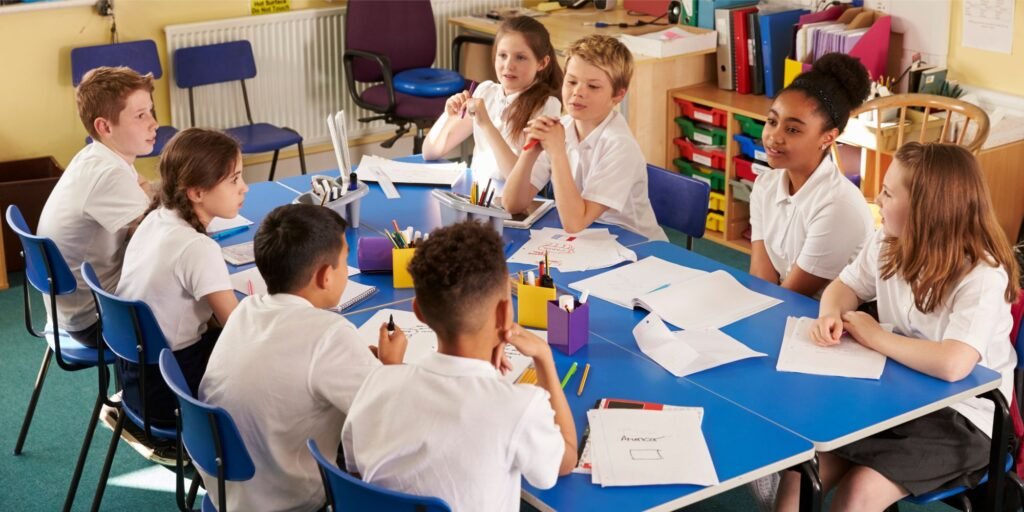Throughout their education, students face many types of content—from fractions in elementary math, narrative writing in middle school, to biology in high school. Each subject requires a different approach, but one skill is essential at every level: learning actively. Unfortunately, this skill is rarely taught explicitly in classrooms.
Here are five proven active learning strategies, complete with practical tips for implementing them in class or during independent study.
1. Teaching Others: Strengthening Understanding
When students teach what they’ve learned to others, they not only recall information but also reorganize and express it logically. This deepens understanding and reveals knowledge gaps.
Tips & Tricks:
- Peer Tutoring: Pair students to explain key concepts to each other.
- Mini Presentations: Have students give a 3–5 minute talk on a topic to the class.
- Reverse Teaching Maps: Ask students to explain concepts as if to an imaginary student who knows nothing.
Teachers can observe how students explain content—any mistakes or missing info can indicate areas that need reinforcement.
2. Retrieval Practice: Training the Brain to Remember
Instead of rereading or highlighting notes, retrieval practice trains students to recall information from memory—an approach proven to strengthen long-term retention.
Tips & Tricks:
- Flashcards: Use digital apps or handmade cards for self-testing.
- Free Recall Writing: Ask students to write everything they remember about a topic, then compare it to the original material.
- Interactive Whiteboards: Have students jot down key concepts from memory, individually or as a class.
This can be combined with spaced retrieval—practicing recall over intervals—for even better results.
3. Study Guides: More Than Just a Cheat Sheet
Pre-made study guides often make students passive. But when students create their own, they must process and organize information themselves.
Tips & Tricks:
- Student-Created Guides: Encourage students to summarize material in their own words.
- Structured Templates: Provide formats (e.g., definition, example, application, follow-up question) to guide their summaries.
- Group Collaboration: Have students work in small groups to create guides, then exchange with other groups for peer review.
Teachers can also encourage the use of visuals—symbols, images, and colors—for better memory and engagement.

4. Concept Maps: Visualizing Knowledge Networks
Concept maps help students see how ideas are connected. They’re especially helpful for subjects with many terms or complex processes, like science or history.
Tips & Tricks:
- Start with a Central Question: Use a big question and branch out from there.
- Use Color and Symbols: Assign different colors for main ideas, details, and connections.
- Digital Collaboration: Use online tools for interactive maps students can build and share.
Students can also swap maps and explain each other’s to reinforce understanding.
5. Practice Questions: Assess Understanding, Not Just Memorization
Good practice questions push students to apply their knowledge—not just repeat definitions.
Tips & Tricks:
- Application-Based Questions: Ask questions that require applying concepts in new contexts.
- Student-Generated Questions: Let students create their own practice questions and swap with peers.
- Answer Discussions: After answering, students should explain their choices to classmates or in small groups.
Follow up with reflective sessions to go over the most challenging questions together.
Instead of teaching these five strategies separately, educators can integrate them into one active learning cycle:
- Start with a concept map to introduce a new topic.
- Have students create their own study guides.
- Practice retrieval with writing or flashcards.
- Encourage peer teaching for review and reflection.
- End with active practice questions and group discussion.
This cycle promotes ongoing engagement with content, improves memory, and sharpens critical thinking.
Teaching students how to learn actively not only improves academic performance—it builds a lifelong skill they’ll use in college, the workplace, and beyond. Teachers, parents, and educators play a crucial role in supporting this process with creative, focused, and student-centered strategies.
With this approach, learning becomes more than just memorization—it becomes meaningful exploration.


Leave a Reply